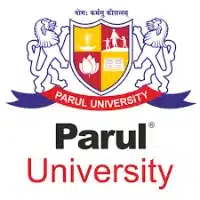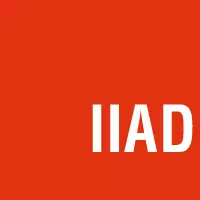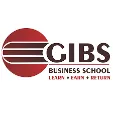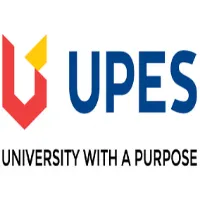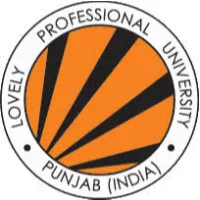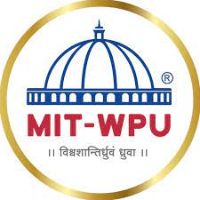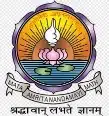Latest Applications Open 2024:
VITEEE 2024 Syllabus is the most important part of the Examination. Vellore Institute of Technology (VIT) will soon publish the syllabus for the VITEEE 2024 exam on their website viteee.vit.ac.in. This syllabus will contain all the subjects and topics in the entrance exam for admission to VIT University’s BTech program in 2024. It’s crucial for candidates preparing for this exam to be familiar with the VITEEE 2024 syllabus. Additionally, it’s a good idea to review the VITEEE 2024 paper pattern to prepare effectively. You can easily download the VITEEE 2024 syllabus in PDF format from the official website to understand exactly what subjects and topics you need to study for the exam.
This syllabus will outline the subjects and topics you must study for the entrance exam. The key subjects for VITEEE 2024 are Mathematics, Physics, Chemistry, Aptitude, and English, all at the level of a 10+2 standard qualifying examination. It’s important for candidates to thoroughly review and comprehend the VITEEE 2024 syllabus to enhance their preparation for the exam. The VITEEE 2024 syllabus has been released by VIT University on its official website, viteee.vit.ac.in.
This syllabus is available for candidates to prepare for the VITEEE 2024 exam. Candidates should review the syllabus for each subject, including Physics, Chemistry, Mathematics, Biology, English, and Aptitude, along with the related topics to prepare effectively for the upcoming VITEEE 2024 entrance exam. Having a clear understanding of the subject-wise topics covered in the VITEEE 2024 syllabus is essential for comprehensive exam preparation.
VITEEE 2024 Physics Syllabus
The VITEEE Physics syllabus covers a wide range of topics in the field of physics, designed to assess candidates’ understanding of fundamental principles and applications. This section evaluates candidates’ knowledge of electromagnetism, optics, mechanics, thermodynamics, and more. It plays a crucial role in the VITEEE examination, assessing candidates’ problem-solving skills and conceptual clarity in physics.
| Units | Topics |
| Laws of Motion & Work, Energy, and Power | – Law of conservation of linear momentum and its applications. – Static and kinetic friction – laws of friction – rolling friction – lubrication. – Work done by a constant force and a variable force; kinetic energy – work-energy theorem – power. – Conservative forces: conservation of mechanical energy (kinetic and potential energies) – non-conservative forces: motion in a vertical circle – elastic and inelastic collisions in one and two dimensions. |
| Properties of Matter | – Elastic behavior – Stress-strain relationship – Hooke’s law – Young’s modulus – bulk modulus – shear modulus of rigidity – Poisson’s ratio – elastic energy. – Viscosity – Stokes’ law – terminal velocity – streamline and turbulent flow – critical velocity. – Bernoulli’s theorem and its applications. – Heat – temperature – thermal expansion: thermal expansion of solids – specific heat capacity: Cp, Cv – latent heat capacity. – Qualitative ideas of Blackbody radiation: Wein’s displacement Law – Stefan’s law. |
| Electrostatics | – Charges and their conservation; Coulomb’s law forces between two point electric charges – Forces between multiple electric charges-superposition principle. – Electric field – electric field due to a point charge, electric field lines; electric dipole, electric field intensity due to a dipole – the behavior of a dipole in a uniform electric field. – Electric potential – potential difference-electric potential due to a point charge and dipole-equipotential surfaces – the electrical potential energy of a system of two point charges. – Electric flux-Gauss’s theorem and its applications. – Electrostatic induction-capacitor and capacitance – dielectric and electric polarization – parallel plate capacitor with and without dielectric medium – applications of capacitor – energy stored in a capacitor – Capacitors in series and in parallel – action points – Van de Graaff generator. |
| Current Electricity | – Electric Current – the flow of charges in a metallic conductor – drift velocity and mobility and their relation with electric current. – Ohm’s law, electrical resistance – V-I characteristics – electrical resistivity and conductivity-classification of materials in terms of conductivity – Carbon resistors – color code for carbon resistors – combination of resistors – series and parallel – temperature dependence of resistance – internal resistance of a cell – potential difference and emf of a cell – combinations of cells in series and in parallel. – Kirchhoff’s law – Wheatstone’s Bridge and its application for temperature coefficient of resistance measurement – Meterbridge – a special case of Wheatstone bridge – Potentiometer principle – comparing the emf of two cells. |
| Magnetic Effects of Electric Current | – Magnetic effect of electric current – Concept of magnetic field – Oersted’s experiment – Biot-Savart law magnetic field due to an infinitely long current carrying straight wire and circular coil – Tangent galvanometer – construction and working – Bar magnet as an equivalent solenoid – magnetic field lines. – Ampere’s circuital law and its application. – Force on a moving charge in a uniform magnetic field and electric field – cyclotron – Force on current carrying conductor in a uniform magnetic field – Forces between two parallel current carrying conductors – definition of ampere. – Torque experienced by a current loop in a uniform magnetic field – moving coil galvanometer – conversion to ammeter and voltmeter – current loop as a magnetic dipole and its magnetic dipole moment – Magnetic dipole moment of a revolving electron. |
| Electromagnetic Induction and Alternating Current | – Electromagnetic induction – Faraday’s law – induced emf and current – Lenz’s law. – Self-induction – Mutual induction – self-inductance of a long solenoid – mutual inductance of two long solenoids. – Methods of inducing emf – (i) by changing magnetic induction (ii) by changing the area enclosed by the coil and (iii) by changing the orientation of the coil (quantitative treatment). – AC generator – commercial generator. (Single phase, three phases). – Eddy current – applications – transformer – long-distance transmission. – Alternating current – measurement of AC – AC circuit with resistance – AC circuit with inductor – AC circuit with capacitor – LCR series circuit – Resonance and Q – factor – power in AC circuits. |
| Optics | – Reflection of light, spherical mirrors, mirror formula. – Refraction of light, total internal reflection and its applications, optical fibers, refraction at spherical surfaces, lenses, thin lens formula, lens maker’s formula. – Magnification, power of a lens, combination of thin lenses in contact, a combination of a lens and a mirror. – Refraction and dispersion of light through a prism. – Scattering of the light-blue color of the sky and the reddish appearance of the sun at sunrise and sunset. – Wavefront and Huygens’s principle – Reflection, total internal reflection and refraction of plane wave at a plane surface using wavefronts. – Interference – Young’s double-slit experiment and expression for fringe width – coherent source – interference of light – Formation of colors in thin films – Newton’s rings. – Diffraction – differences between interference and diffraction of light- diffraction grating. – Polarization of light waves – polarization by reflection – Brewster’s law – double refraction – Nicol prism – uses of plane-polarized light and Polaroids – rotatory polarization – polarimeter. |
| Dual Nature of Radiation and Atomic Physics | – Electromagnetic waves and their characteristics – Electromagnetic spectrum – Photoelectric effect – Light waves and photons – Einstein’s photoelectric equation – laws of photoelectric emission – particle nature of light – photo cells and their applications. – Atomic structure – discovery of the electron – specific charge (Thomson’s method) and charge of the electron (Millikan’s oil drop method) – alpha scattering – Rutherford’s atom model. |
| Nuclear Physics | – Nuclear properties – nuclear radii, masses, binding energy, density, charge – isotopes, isobars, and isotones – nuclear mass defect – binding energy – stability of nuclei – Bainbridge mass spectrometer. – Nature of nuclear forces – Neutron – discovery – properties – artificial transmutation – particle accelerator. – Radioactivity – alpha, beta, and gamma radiations and their properties – Radioactive decay law – half-life – mean life – artificial radioactivity – radio isotopes – effects and uses – Geiger – Muller counter. – Radiocarbon dating. – Nuclear fission – chain reaction – atom bomb – nuclear reactor – nuclear fusion – Hydrogen bomb – cosmic rays – elementary particles. |
| Semiconductor Devices and their Applications | – Semiconductor basics – energy band in solids: difference between metals, insulators, and semiconductors – semiconductor doping – Intrinsic and Extrinsic semiconductors. – Formation of P-N Junction – Barrier potential and depletion layer-P-N Junction diode – Forward and reverse bias characteristics – diode as a rectifier – Zener diode as a voltage regulator – LED. – Junction transistors – characteristics – transistor as a switch – transistor as an amplifier – transistor as an oscillator. – Logic gates – NOT, OR, AND, EXOR using discrete components – NAND and NOR gates as universal gates – De Morgan’s theorem – Laws and theorems of Boolean algebra. |
Chapter-wise Physics Subjects weightage for VITEEE Syllabus
Although VIT University doesn’t officially provide a breakdown of the weightage for specific chapters in the VITEEE Physics exam, students who took the test in previous years have shared that about 60% of the questions are typically based on class 12th topics. This means that subjects like Mechanics, Electrodynamics, Modern Physics, EMI, Electrostatics, Magnetic Effects, and others from the class 12th syllabus tend to have more weight in the VITEEE Physics section.
Latest Applications For Various UG & PG Courses Open 2024
-
- Parul University | Admissions Open for All Courses 2024. Apply Now
- UPES Dehradun | Admissions Open for All Courses 2024. Apply Now
- Chandigarh University | Admissions Open for All Courses 2024. Apply Now
- LPU 2024 | Admissions Open for All Courses 2024. Apply Now
- IIAD, Delhi | Admissions Open for All Courses 2024. Apply Now
- GIBS, Bangalore | PGDM Applications Open. Package upto 15.5 LPA. Apply Now
- GNIOT, Greater Noida | Admissions Open for All Courses 2023. Apply Now
- The Design Village | Admissions Open for All Courses 2024. Apply Now
- IMS Ghaziabad UC Campus | Admissions Open for All Courses 2024. Apply Now
- KIIT School of Management | Admissions Open for All Courses 2024. Apply Now
- KSRM | Admissions Open for All Courses 2024. Apply Now
- Jaipuria Institute of Management | Admissions Open for All Courses 2024. Apply Now
- NIIT | Admissions Open for All Courses 2024. Apply Now
- MITWPU | Admissions Open for All Courses 2024. Apply Now
- Amrita B.Tech | Admissions Open for All Courses 2024. Apply Now
- KL University | Admissions Open for All Courses 2024. Apply Now
- Alliance MBA | Admissions Open for All Courses 2024. Apply Now
- Alliance UG | Admissions Open for All Courses 2024. Apply Now
| Physics Topics | Number of Expected Questions |
| Electrostatics | 5 |
| Current Electricity | 3 |
| Magnetic Effects of Electric Current and Magnetism | 5 |
| Electromagnetic Induction and Alternating Current | 5 |
| Optics | 3 |
| Electromagnetic Waves and Wave Optics | 5 |
| Atomic and Nuclear Physics | 7 |
| Dual Nature of Radiation and Matter | 5 |
Click to Dowload Physics Syllabus PDF.
VITEEE 2023 Important Topics for Physics
| High Weightage Topics | Low Weightage Topics |
| Complex Numbers | Quadratic Equation |
| Probability | Permutations & Combinations |
| Calculus | Definite Integral in Calculus |
| Application of Derivatives | Vector & 3D Geometry |
| Continuity & Differentiability | Definite Integration |
| Matrices in Algebra: Circle, Parabola, Hyperbola in Coordinate Geometry | Functions & Limits |
| Application of Derivatives | Coordinate Geometry |
| Determinants | Conic Section |
VITEEE 2024 Chemistry Syllabus
The VITEEE Chemistry syllabus is a comprehensive list of topics that test a candidate’s knowledge of chemical principles and their practical applications. It encompasses various areas such as inorganic chemistry, organic chemistry, physical chemistry, and biochemistry, ensuring a well-rounded understanding of the subject.
| Units | Topics |
| Atomic Structure | – Bohr’s atomic model – Sommerfeld’s extension of atomic structure – Electronic configuration and Quantum numbers – Shapes of s, p, d, f orbitals – Pauli’s exclusion principle – Hund’s Rule of maximum multiplicity – Aufbau principle – Emission spectrum, absorption spectrum, line spectra and band spectra – Hydrogen spectrum – Lyman, Balmer, Paschen, Brackett and Pfund series – de Broglie’s theory – Heisenberg’s uncertainty principle – wave nature of electron – Schrödinger wave equation (No derivation) – Eigenvalues and eigenfunctions – Hybridization of atomic orbitals involving s, p, d orbitals – p, d, and f – Block Elements – p-block elements – Phosphorous compounds; PCl3, PCl5 – Oxides – Hydrogen halides, Interhalogen compounds – Xenon fluoride compounds – General Characteristics of d – block elements – Electronic Configuration – Oxidation states of first-row transition elements and their colors – Occurrence and principles of extraction: Copper, Silver, Gold, and Zinc – Preparation, properties of CuSO4, AgNO3, and K2Cr2O7 – Lanthanides – Introduction, electronic configuration, general characteristics, oxidation state – lanthanide contraction, uses, brief comparison of Lanthanides and Actinides. |
| Coordination Chemistry and Solid State Chemistry | – Introduction – Terminology in coordination chemistry – IUPAC nomenclature of mononuclear coordination compounds – Isomerism, Geometrical isomerism in 4-coordinate, 6-coordinate complexes – Theories on coordination compounds – Werner’s theory (brief), Valence Bond theory – Uses of coordination compounds – Bioinorganic compounds (Haemoglobin and chlorophyll) – Lattice – unit cell, systems, types of crystals, packing in solids; Ionic crystals – Imperfections in solids – point defects – X-Ray diffraction – Electrical Property, Amorphous solids (elementary ideas only). |
| Thermodynamics, Chemical Equilibrium and Chemical Kinetics | – I and II law of thermodynamics – spontaneous and non-spontaneous processes, entropy, Gibbs’ free energy – Free energy change and chemical equilibrium – the significance of entropy – Law of mass action – Le Chatelier’s principle, applications of chemical equilibrium – Rate expression, order, and molecularity of reactions, zero order, first order and pseudo-first-order reaction – half-life period – Determination of rate constant and order of reaction – Temperature dependence of rate constant – Arrhenius equation, activation energy. |
| Electrochemistry | – Theory of electrical conductance; metallic and electrolytic conductance – Faraday’s laws – theory of strong electrolytes – Specific resistance, specific conductance, equivalent and molar conductance – Variation of conductance with dilution – Kohlrausch’s Law – Ionic product of water, pH and pOH – buffer solutions – use of pH values – Cells – Electrodes and electrode potentials – construction of cell and EMF values, Fuel cells, Corrosion and its prevention. |
| Isomerism in Organic Compounds | – Definition, Classification – structural isomerism, stereo isomerism – geometrical and optical isomerism – Optical activity- chirality – compounds containing chiral centers – R – S notation, D – L notation. |
| Alcohols and Ethers | – Nomenclature of alcohols – Classification of alcohols – the distinction between 10, 20 and 30 alcohols – General methods of preparation of primary alcohols, properties – Methods of preparation of dihydric alcohols: Glycol – Properties – Uses – Methods of preparation of trihydric alcohols – Properties – Uses – Aromatic alcohols – preparation and properties of phenols and benzyl alcohol – Ethers – Nomenclature of ethers – general methods of preparation of aliphatic ethers – Properties – Uses – Aromatic ethers – Preparation of Anisole – Uses. |
| Carbonyl Compounds | – Nomenclature of carbonyl compounds – Comparison of aldehydes and ketones – General methods of preparation of aldehydes – Properties – Uses – Aromatic aldehydes – Preparation of benzaldehyde – Properties and Uses – Ketones – general methods of preparation of aliphatic ketones (acetone) – Properties – Uses – Aromatic ketones – preparation of acetophenone – Properties – Uses, preparation of benzophenone – Properties – Name reactions; Clemmenson reduction, Wolff – Kishner reduction, Cannizzaro reaction, Claisen Schmidt reaction, Benzoin Condensation, aldol Condensation – Preparation and applications of Grignard reagents. |
| Carboxylic Acids and their derivatives | – Nomenclature – Preparation of aliphatic monocarboxylic acids – formic acid – Properties – Uses – Monohydroxy mono carboxylic acids; Lactic acid – Synthesis of lactic acid – Aliphatic dicarboxylic acids; Preparation of oxalic and succinic acid – Aromatic acids; Benzoic and Salicylic acid – Properties – Uses – Derivatives of carboxylic acids; acetyl chloride (CH3COCl) – Preparation – Properties – Uses – Preparation of acetamide, Properties – acetic anhydride – Preparation, Properties – Preparation of esters – methyl acetate – Properties. |
| Organic Nitrogen Compounds | – Aliphatic nitro compounds – Preparation of aliphatic nitroalkanes – Properties – Uses – Aromatic nitro compounds – Preparation – Properties – Uses – The distinction between aliphatic and aromatic nitro compounds – Amines; aliphatic amines – General methods of preparation – Properties – Distinction between 10, 20 and 30 amines – Aromatic amines – Synthesis of benzylamine – Properties, Aniline – Preparation – Properties – Uses – The distinction between aliphatic and aromatic amine – Aliphatic nitriles – Preparation – properties – Uses – Diazonium salts – Preparation of benzene diazonium chloride – Properties. |
| Carbohydrates, Amino acids, Peptides, Lipids | – Carbohydrates – the distinction between sugars and non-sugars, structural formulae of glucose, fructose and sucrose, with their linkages, invert sugar – definition, examples of oligo and polysaccharides – Amino acids – classification with examples – Peptides-properties of the peptide bond – Lipids – Definition, classification with examples, the difference between fats, oils, and waxes. |
Chapter-wise Chemistry Subjects weightage for VITEEE Syllabus
Many VITEEE candidates we talked to emphasized the importance of NCERT’s Chemistry book for scoring well in the exam. They mentioned that many questions come from Physical Chemistry, and Organic Chemistry carries substantial weight in the exam. The Organic Chemistry questions are based on the Class 12th syllabus. Additionally, there have been some questions from Inorganic Chemistry in the past VITEEE exams. It’s worth noting that VIT University does not provide specific information about the weightage of individual chapters in the exam.
| Chemistry Topics | Number of Expected Questions |
| Atomic Structure | 4 |
| P, D and Block Elements | 4 |
| Coordination Chemistry and Solid-State Chemistry | 4 |
| Thermodynamics, Chemical Equilibrium and Chemical Kinetics | 4 |
| Electrochemistry | 2 |
| Isomerism in Organic Compounds | 2 |
| Alcohols and Ethers | 4 |
| Carbonyl Compounds | 4 |
| Organic Nitrogen Compounds | 2 |
| Carboxylic Acids and their Derivatives | 2 |
| Biomolecules | 6 |
Click to Dowload Chemistry Syllabus PDF.
VITEEE 2023 Important Topics for Chemistry
| High Weightage Topics | Low Weightage Topics |
| Chemical Kinetics | Surface Chemistry |
| Equilibrium | Chemical Bonding & Molecular Structure |
| Atomic Structure | Redox Reactions |
| Chemistry: Basic Concepts | Electrochemistry |
| States of Matter | Organic Compounds Containing Nitrogen |
| Bio-Molecules | Organic Chemistry: Basic Principles |
| Organic Compounds: Purification & Characterisation | Hydrocarbons |
| Organic Compounds Containing Oxygen | Isolation of Metals: General Principles and Process |
| Hydrogen | Classification of Elements & Periodicity in Properties |
| s,p,d,f- Block Elements | Environmental Chemistry |
VITEEE 2024 Mathematics Syllabus
The VITEEE Mathematics syllabus includes various mathematical concepts and topics that candidates must understand and solve during the exam. It evaluates their calculus, algebra, geometry, and statistics skills to assess their mathematical abilities.
| Units | Topics |
| Matrices and their Applications | – Definition of a conic – general equation of a conic, classification concerning the general equation of a conic, classification of conics concerning eccentricity – Equations of conic sections (parabola, ellipse, and hyperbola) in standard forms and general forms- Directrix, Focus, and Latus-rectum – a parametric form of conics and chords – Tangents and normals – Cartesian form and parametric form- equation of the chord of contact of tangents from a point (x1,y1) to all the above-said curves – Asymptotes, Rectangular hyperbola – Standard equation of a rectangular hyperbola. |
| Trigonometry and Complex Numbers | – Definition, range, domain, principal value branch, graphs of inverse trigonometric functions and their elementary properties – Complex number system – conjugate, properties, ordered pair representation – Modulus – properties, geometrical representation, polar form, principal value, conjugate, sum, difference, product, quotient, vector interpretation, solutions of polynomial equations, De Moivre’s theorem and its applications – Roots of a complex number – nth roots, cube roots, fourth roots. |
| Analytical Geometry of two dimensions | – Definition of a conic – general equation of a conic, classification concerning the general equation of a conic, classification of conics with respect to eccentricity – Equations of conic sections (parabola, ellipse, and hyperbola) in standard forms and general forms- Directrix, Focus, and Latus-rectum – a parametric form of conics and chords – Tangents and normals – Cartesian form and parametric form- equation of the chord of contact of tangents from a point (x1,y1) to all the above-said curves – Asymptotes, Rectangular hyperbola – Standard equation of a rectangular hyperbola. |
| Vector Algebra | – Scalar Product – the angle between two vectors, properties of scalar product, and applications of the dot product – Vector product, right-handed and left-handed systems, properties of vector product, applications of cross product – Product of three vectors – Scalar triple product, properties of scalar triple product, vector triple product, vector product of four vectors, scalar product of four vectors. |
| Analytical Geometry of Three Dimensions | – Direction cosines – direction ratios – equation of a straight line passing through a given point and parallel to a given line, passing through two given points, the angle between two lines – Planes – equation of a plane, passing through a given point and perpendicular to a line, given the distance from the origin and unit normal, passing through a given point and parallel to two given lines, passing through two given points and parallel to a given line, passing through three given non-collinear points, passing through the line of intersection of two given planes, the distance between a point and a plane, the plane that contains two given lines (co-planar lines), angle between a line and a plane – Skew lines – the shortest distance between two lines, condition for two lines to intersect, point of intersection, collinearity of three points – Sphere – equation of the sphere whose center and radius are given, equation of a sphere when the extremities of the diameter are given. |
| Differential Calculus | – Limits, continuity and differentiability of functions – Derivative as a rate of change, velocity, acceleration, and related rates, and derivative as a measure of slope, tangent, normal and angle between curves – Mean value theorem – Rolle’s Theorem, Lagrange Mean Value Theorem, Taylor’s and Maclaurin’s series, L’ Hospital’s Rule, stationary points, increasing, decreasing, maxima, minima, concavity, convexity and points of inflexion – Errors and approximations – absolute, relative, percentage errors – curve tracing, partial derivatives, Euler’s theorem. |
| Integral Calculus and its Applications | – Simple definite integrals – fundamental theorems of calculus, properties of definite integrals – Reduction formulae – reduction formulae for x dx n sin and x dx n cos, Bernoulli’s formula – Area of bounded regions, length of the curve. |
| Differential Equations | – Differential equations – formation of differential equations, order and degree, solving differential equations (1st order), variables separable, homogeneous and linear equations – Second-order linear differential equations – second-order linear differential equations with constant coefficients, finding the particular integral if f(x) = emx, sin mx, cos mx, x, x2. |
| Probability Distributions | – Probability – Axioms – Addition law – Conditional probability – Multiplicative law – Baye’s Theorem – Random variable – probability density function, distribution function, mathematical expectation, variance – Theoretical distributions – discrete distributions, Binomial, Poisson distributions – Continuous distributions, Normal distribution. |
| Discrete Mathematics | – Functions – Relations – Basics of counting – Mathematical logic – logical statements, connectives, truth tables, logical equivalence, tautology, a contradiction – Groups-binary operations, semi-groups, monoids, groups, order of a group, order of an element, properties of groups. |
Chapter-wise Mathematics Subjects weightage for VITEEE Syllabus
As per the feedback from students who have taken the VITEEE exam, there is a perception that certain topics like Coordinate Geometry, Calculus, Vector Algebra, and Differentiation carry more weightage in the exam. It’s important to note that VIT University does not provide specific chapter-wise weightage information for Mathematics in the VITEEE exam. Therefore, while these topics may be important, candidates should aim for a well-rounded understanding of the Mathematics syllabus to perform well in the exam.
| Topics | Number of Expected Questions |
| Applications of Matrices and Determinants | 4 |
| Complex Numbers | 3 |
| Analytical Geometry of Two Dimensions | 6 |
| Vector Algebra | 2 |
| Analytical Geometry of Three Dimensions | 4 |
| Differential Calculus | 5 |
| Integral Calculus and its Applications | 6 |
| Differential Equations | 3 |
| Probability Distributions | 4 |
| Discrete Mathematics | 3 |
Click to Dowload Mathematics Syllabus PDF.
VITEEE 2023 Important Topics for Mathematics
| High Weightage Topics | Low Weightage Topics |
| Complex Numbers | Quadratic Equation |
| Probability | Permutations & Combinations |
| Calculus | Definite Integral in Calculus |
| Application of Derivatives | Vector & 3D Geometry |
| Continuity & Differentiability | Definite Integration |
| Matrices in Algebra: Circle, Parabola, Hyperbola in Coordinate Geometry | Functions & Limits |
| Application of Derivatives | Coordinate Geometry |
| Determinants | Conic Section |
VITEEE 2024 Biology Syllabus
The VITEEE Biology syllabus is a vital part of the exam for aspiring biology enthusiasts. It covers diverse topics such as genetics, ecology, human physiology, and more, providing a comprehensive assessment of candidates’ biological knowledge.
| Unit | Topics |
| Taxonomy | – Need for classification – Three domains of life – Linnaean, Whittaker, Bentham and Hooker systems of classification – Salient features of non-chordates up to phyla levels and chordates up to class levels. |
| Cell and Molecular Biology | – Cell theory – Prokaryotic cell and its ultrastructure – Eukaryotic cell: cell wall, cell membrane, cytoskeleton, nucleus, chloroplast, mitochondria, endoplasmic reticulum, Golgi bodies, ribosomes, lysosomes, vacuoles, and centrosomes – Cell cycle and division: amitosis, mitosis, and meiosis – Search for genetic material – Structure of DNA and RNA – Replication, transcription, genetic code, translation, splicing, gene expression and regulation (lac operon), and DNA repair. |
| Reproduction | – Asexual reproduction: binary fission, sporulation, budding, gemmule formation, and fragmentation – Vegetative propagation in plants – Sexual reproduction in flowering plants and structure of flowers – Pollination, fertilization, development of seeds and fruits, seed dispersal, apomixis, parthenocarpy, and polyembryony – Human reproductive system – Gametogenesis, menstrual cycle, fertilization, implantation, embryo development up to blastocyst formation, pregnancy, parturition, and lactation – Assisted reproductive technologies. |
| Genetics and Evolution | – Chromosomes: structure and types – Linkage and crossing over – Recombination of chromosomes – Mutation and chromosomal aberrations – Mendelian inheritance – Chromosomal theory of inheritance – Deviation from Mendelian ratio (incomplete dominance, co-dominance, multiple allelism, pleiotropy) – Sex-linked inheritance and sex determination in humans – Darwinism – Neo-Darwinism – Hardy and Weinberg’s principle and factors affecting the equilibrium: selection, mutation, migration, and random genetic drift. |
| Human Health and Diseases | – Pathogens, parasites causing human diseases (malaria, dengue, chikungunya, filariasis, ascariasis, typhoid, pneumonia, common cold, amoebiasis, ringworm) and their control – Basic concepts of immunology, vaccines, antibiotics, cancer, HIV and AIDS – Adolescence, drug and alcohol abuse. |
| Biochemistry | – Structure and function of carbohydrates, lipids, and proteins – Enzymes: types, properties, and enzyme action – Metabolism: glycolysis, Kreb’s cycle, and pentose phosphate pathway. |
| Plant Physiology | – Movement of water, food, nutrients, gases, and minerals – Passive diffusion, facilitated diffusion, and active transport – Imbibition, osmosis, apoplast and symplast transport, and guttation – Transpiration, photosynthesis (light and dark reactions) and electron transport chain – Hormones and growth regulators, photoperiodism and vernalization – Nitrogen cycle and biological nitrogen fixation. |
| Human Physiology | – Digestion and absorption – Breathing and respiration – Body fluids and circulation – Excretory system – Endocrine system – Nervous system – Skeletal and muscular systems – Locomotion and movement – Growth, aging, and death – Hormones: types of hormones, functions, and disorders. |
| Biotechnology and its applications | – Recombinant DNA technology, applications in health, agriculture, and industries – Genetically modified organisms – Human insulin, vaccine, and antibiotic production – Stem cell technology and gene therapy – Apiculture and animal husbandry – Plant breeding, tissue culture, single cell protein, fortification, Bt crops, and transgenic animals – Microbes in food processing, sewage treatment, waste management, and energy generation – Biocontrol agents and biofertilizers – Biosafety issues, biopiracy, and patents. |
| Biodiversity, ecology, and environment | – Ecosystems: components, types, pyramids, nutrient cycles (carbon and phosphorous), ecological succession, and energy flow in an ecosystem – Biodiversity: concepts, patterns, importance, conservation, hot spots, endangered organisms, extinction, Red data book, botanical gardens, national parks, sanctuaries, museums, biosphere reserves, and Ramsar sites – Environmental issues: pollution and its control – Population attributes: growth, birth and death rate, and age distribution. |
VITEEE Syllabus 2024 Weightage of Biology Syllabus
| Biology Topics | Number of Expected Questions |
| Taxonomy | 4 |
| Reproduction | 5 |
| Genetics and Evolution | 4 |
| Ecology and Environment | 2 |
| Human Physiology | 3 |
Click to Download Biology Syllabus PDF.
English Syllabus for VITEEE
The English section of VITEEE will include Multiple Choice Questions (MCQs) that evaluate your understanding of brief passages, lines from poems, English grammar, and pronunciation. It’s crucial to remember that the content is designed to match the difficulty expected at the higher secondary or equivalent education level.
Aptitude Syllabus for VITEEE
- Data Interpretation
- Data Sufficiency
- Syllogism
- Number Series, Coding, and Decoding
- Clocks, Calendars, and Directions
This summarizes the topics you’ll encounter in the Aptitude section of the VITEEE exam.
Click to Download English Apitude Syllabus PDF.
VITEEE 2024 Exam Pattern
VITEEE 2024 Exam Patterns are given there for students to read before the examination. The Vellore Institute of Technology will release the official exam pattern for VITEEE 2024 on its official website. It is important for candidates planning to take the upcoming exam to be familiar with the official exam pattern and the VIT syllabus for 2024. This knowledge will aid them in preparing effectively for the VITEEE. The syllabus for the VIT Engineering entrance examination 2024 has been provided above.
| Particulars | VITEEE Exam Pattern 2024 |
| Examination Mode | Online – Computer Based Test |
| Duration of Exam | 2 hours 30 minutes |
| Sections | Mathematics: 40 Questions |
| Physics: 35 Questions | |
| Chemistry: 35 Questions | |
| Aptitude: 10 Questions | |
| English: 5 Questions | |
| Type of Questions | Objective – Multiple Choice Questions (MCQs) |
| Total Number of Questions | 125 questions |
| Marking Scheme | For each correct response, one mark will be awarded |
| Negative Marking | There is no provision for negative marking in VITEEE 2024 |
VITEEE Syllabus 2024 – Recommended Books (Subject-Wise)
Students preparing for the VITEEE 2024 exam have the option of seeking assistance from VITEEE coaching institutes. On the other hand, those who prefer self-study can utilize the recommended books for each subject in the VITEEE Syllabus 2024.
| Best Books for Physics | |
| VITEEE Physics Book | Author |
| Concepts of Physics – I | HC Verma |
| Concepts of Physics – II | HC Verma |
| Arihant Series | DC Pandey |
| MCQ Question Bank | D Mukerjee |
| Best Books for Chemistry | |
| VITEEE Chemistry Book | Author |
| Organic Chemistry | Robert T. Morrison, Robert N. Boyd |
| Organic Chemistry 8/e | Bruice |
| Chemistry Textbook Part – 2 for Class 11 | NCERT |
| Best Books for Biology | |
| VITEEE Biology Book | Author |
| AC Dutta for Botany | Oxford Publication |
| Biology Textbook for Class 11 | NCERT |
| Pradeep’s Biology Guide | PS Dhami, G Chopra, HN Srivastava |
| Best Books for Mathematics | |
| VITEEE Mathematics Book | Author |
| Integral Calculus For JEE Main & Advanced | Dr. SK Goyal |
| VITEEE Mock Tests and Solved Papers | Arihant Publication |
| Objective Mathematics Part 1 and Part 2 | RD Sharma |
Here are the recommended books for English and Aptitude in the VITEEE Syllabus 2024:
Best Books for English:
Latest Applications For Various UG & PG Courses Open 2024
-
- Parul University | Admissions Open for All Courses 2024. Apply Now
- UPES Dehradun | Admissions Open for All Courses 2024. Apply Now
- Chandigarh University | Admissions Open for All Courses 2024. Apply Now
- LPU 2024 | Admissions Open for All Courses 2024. Apply Now
- IIAD, Delhi | Admissions Open for All Courses 2024. Apply Now
- GIBS, Bangalore | PGDM Applications Open. Package upto 15.5 LPA. Apply Now
- GNIOT, Greater Noida | Admissions Open for All Courses 2023. Apply Now
- The Design Village | Admissions Open for All Courses 2024. Apply Now
- IMS Ghaziabad UC Campus | Admissions Open for All Courses 2024. Apply Now
- KIIT School of Management | Admissions Open for All Courses 2024. Apply Now
- KSRM | Admissions Open for All Courses 2024. Apply Now
- Jaipuria Institute of Management | Admissions Open for All Courses 2024. Apply Now
- NIIT | Admissions Open for All Courses 2024. Apply Now
- MITWPU | Admissions Open for All Courses 2024. Apply Now
- Amrita B.Tech | Admissions Open for All Courses 2024. Apply Now
- KL University | Admissions Open for All Courses 2024. Apply Now
- Alliance MBA | Admissions Open for All Courses 2024. Apply Now
- Alliance UG | Admissions Open for All Courses 2024. Apply Now
- Objective General English
- Wren & Martin High School English Grammar and Composition Book
Best Books for Aptitude:
- Quantitative Aptitude for Competitive Examinations
- Shortcuts in Quantitative Aptitude for Competitive Exams
VITEEE 2024 Syllabus FAQs
Where can I find the VITEEE syllabus 2024?
The VITEEE syllabus for 2024 can be found on the official website of VIT or in the official VITEEE 2024 information brochures. Additionally, you can refer to the syllabus provided in this article for reference.
Why should I refer to the VITEEE 2024 syllabus?
Referring to the VITEEE 2024 syllabus is essential as it provides a clear understanding of the topics and subjects you need to study for the exam. It helps you stay focused and ensures that you cover all the necessary content.
How many questions will be asked in VITEEE 2024?
According to the VITEEE 2024 exam pattern, there will be 125 questions in the exam.
Is NCERT enough for VITEEE?
NCERT books can be valuable for VITEEE preparation as they cover fundamental concepts. However, it’s advisable to refer to additional study materials and practice papers to enhance your preparation.
What is the VITEEE exam duration?
The VITEEE 2024 exam duration is 2 hours and 30 minutes.
Do the VITEEE 2024 questions follow the prescribed syllabus?
Yes, VITEEE 2024 questions strictly adhere to the syllabus provided by VIT. No questions from outside the syllabus are included in the exam.
What are the most important topics for scoring well in VITEEE 2024?
To score well in VITEEE 2024, it’s essential to cover all the topics mentioned in the syllabus thoroughly. No specific set of “most important” topics exists, as all subjects and chapters are crucial for success.
Do the questions repeat in VITEEE?
While some questions may repeat in Chemistry, it’s less likely in Maths and Physics. To prepare effectively, practice the previous year’s question papers as they can provide insight into question trends.
What topics are important to cover in the English section for VITEEE 2024?
In the English section of VITEEE 2024, it’s important to focus on comprehension questions, English grammar, and pronunciation-based questions.
Which are some of the topics covered under the VITEEE Chemistry syllabus 2024?
The VITEEE Chemistry syllabus 2024 includes topics like Organic Nitrogen Compounds, Biomolecules and Polymers, Inorganic and Material Chemistry, and Analytical Chemistry.
Which are some of the topics covered under the VITEEE Maths syllabus 2024?
The VITEEE Maths syllabus for 2023 includes topics such as Integral Calculus and its Applications, Differential Equations, Probability and Distributions, and Discrete Mathematics.
Which subjects are covered under the VITEEE syllabus?
The VITEEE syllabus covers subjects like Mathematics, Physics, Chemistry, Aptitude, English, and Aptitude.
Do I need to study everything on the VITEEE syllabus?
It’s recommended to study the entire VITEEE syllabus to increase your chances of performing well in the exam.
Is the VITEEE syllabus important?
Yes, the VITEEE syllabus is essential for candidates preparing for the exam as it guides them on what subjects and topics to focus on during their preparation.
If you have any queries regarding VITEEE Syllabus 2024, you can ask your query and leave comments below.

As a dedicated Biology Science graduate, I’m passionate about sharing the latest updates in national and state entrance exams through my blog. I aim to keep aspiring students informed about exam trends, important dates, and changes in syllabi. With a keen interest in education, I strive to offer valuable insights for students navigating the competitive landscape of entrance examinations and admission tests. Stay updated with me.


